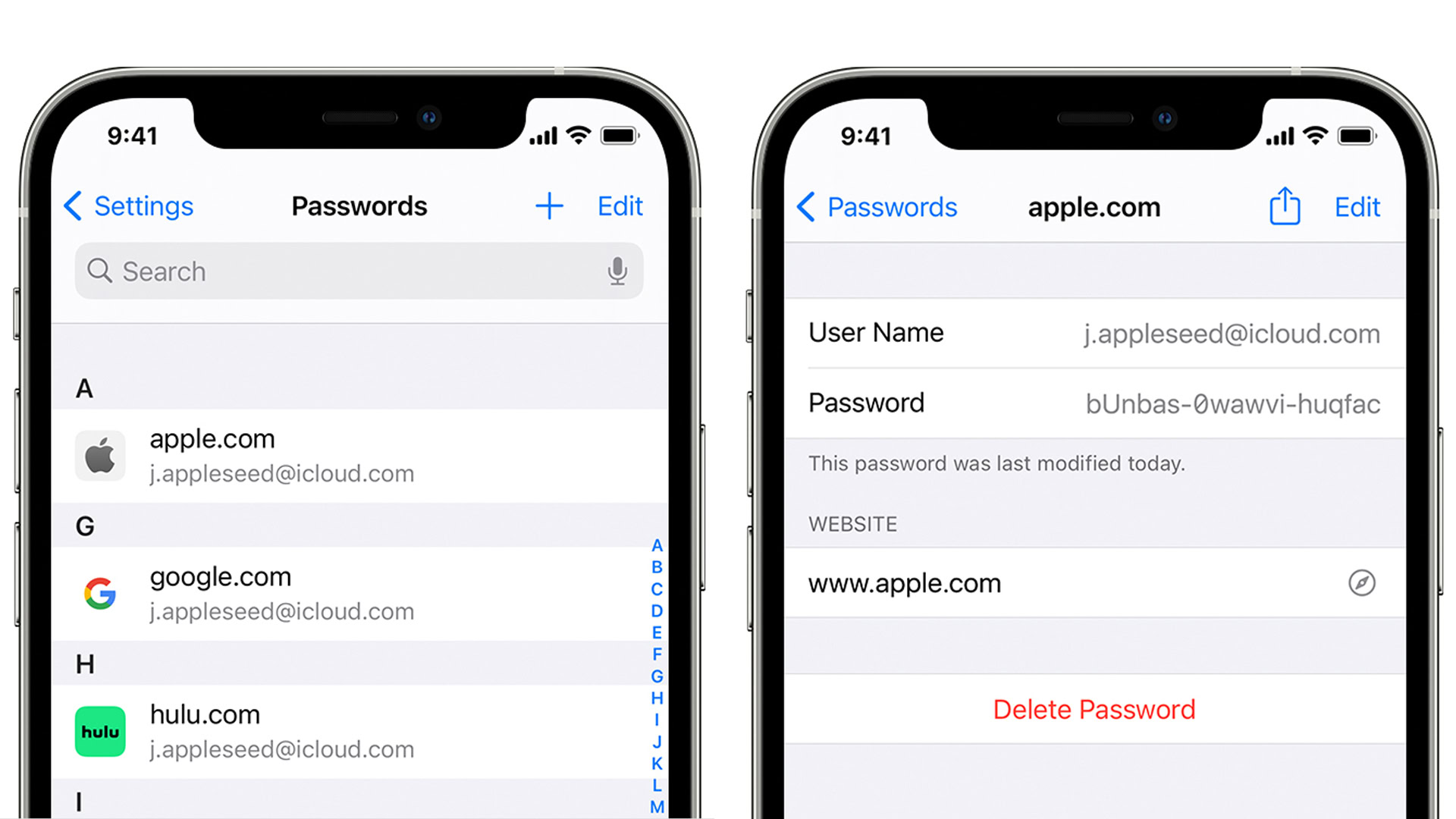Affiliate links on Android Authority may earn us a commission. Learn more.
How to find and manage saved passwords on an iPhone
Remembering passwords is one of the banes of modern existence, especially if you make them complex and unique like experts recommend. Mercifully, then, a lot of the iCloud Keychain passwords you use for apps and the web can be surfaced on your iPhone if you know where to look. Here’s how to find saved passwords on your iPhone, as well as add, edit, and delete them.
Read more: How to unlock an iPhone if you forgot the passcode
QUICK ANSWER
Many of the passwords you use for apps and websites should be stored in your iPhone's Settings app. Select Passwords, then verify your identity when prompted. Tap on a login to view more details, including options to edit or delete it. You'll have to tap the Password field to show its contents.
JUMP TO KEY SECTIONS
How to find saved passwords on your iPhone

You can locate iCloud Keychain passwords in the Settings app:
- In Settings, tap on Passwords.
- Verify your identity using Face ID, Touch ID, or your passcode.
- Scroll through the list or use the search bar to find the app/website you’re looking for. Apple displays URLs for logins regardless of whether they were created in an app — they’re associated with an online service.
- Tap on a login to see details, and again on the password field to reveal it. Passwords are initially masked by dots so people can’t read them over your shoulder.
Note that there’s also an AutoFill Passwords option. This lets you toggle AutoFill on and off for your iPhone, as well as choose which sources logins can come from. If you use Google Chrome as your main phone browser, for example, make sure both Chrome and iCloud Keychain are enabled.
You’ll also see a Security Recommendations menu. That’s where Apple algorithms identify potential problems with your passwords, such as detection in a data leak, too much reuse, or a common keyboard pattern. If you’re not having real-world trouble it’s alright to ignore this, or even disable the Detect Compromised Passwords option, but following recommendations will enhance your safety.
How to edit or delete saved passwords on your iPhone
When you’re looking at a login’s details (not the overall list) in the Password menu, tap Edit. This unlocks the User Name and Password fields, which are normally read-only so you don’t sabotage anything. In fact, be careful — don’t change any info unless you can confirm a login that works with the app/site you’re trying to use. Changes here won’t affect anything on the service provider’s end, so if you make a mistake, you’re just breaking an AutoFill entry.
You can delete passwords in one of two ways. If you want to do it one at a time, tap an individual login, then on Delete Password at the bottom of the screen. To delete multiple passwords simultaneously, go to the main Password menu and hit Edit. Select the ones you want to scrub and tap Delete. Once again, be careful, because you’ll have to recreate any logins you remove by accident.
How to manually add a new password to your iPhone
We’d actually recommend against this option. It’s redundant, since most of the time, your iPhone and other devices will prompt you to save a password if you’re logging into a new app or website. Even if one hasn’t automatically been imported into iOS, entering it into the actual app or website should trigger another save prompt.
If you still need to manually add a login, you can do that by going into Settings > Password and tapping the plus icon at the top of the screen. You’ll be asked to enter a website (URL), username, and password. Tap Done when you’re finished.
Read more: The best password manager apps for Android